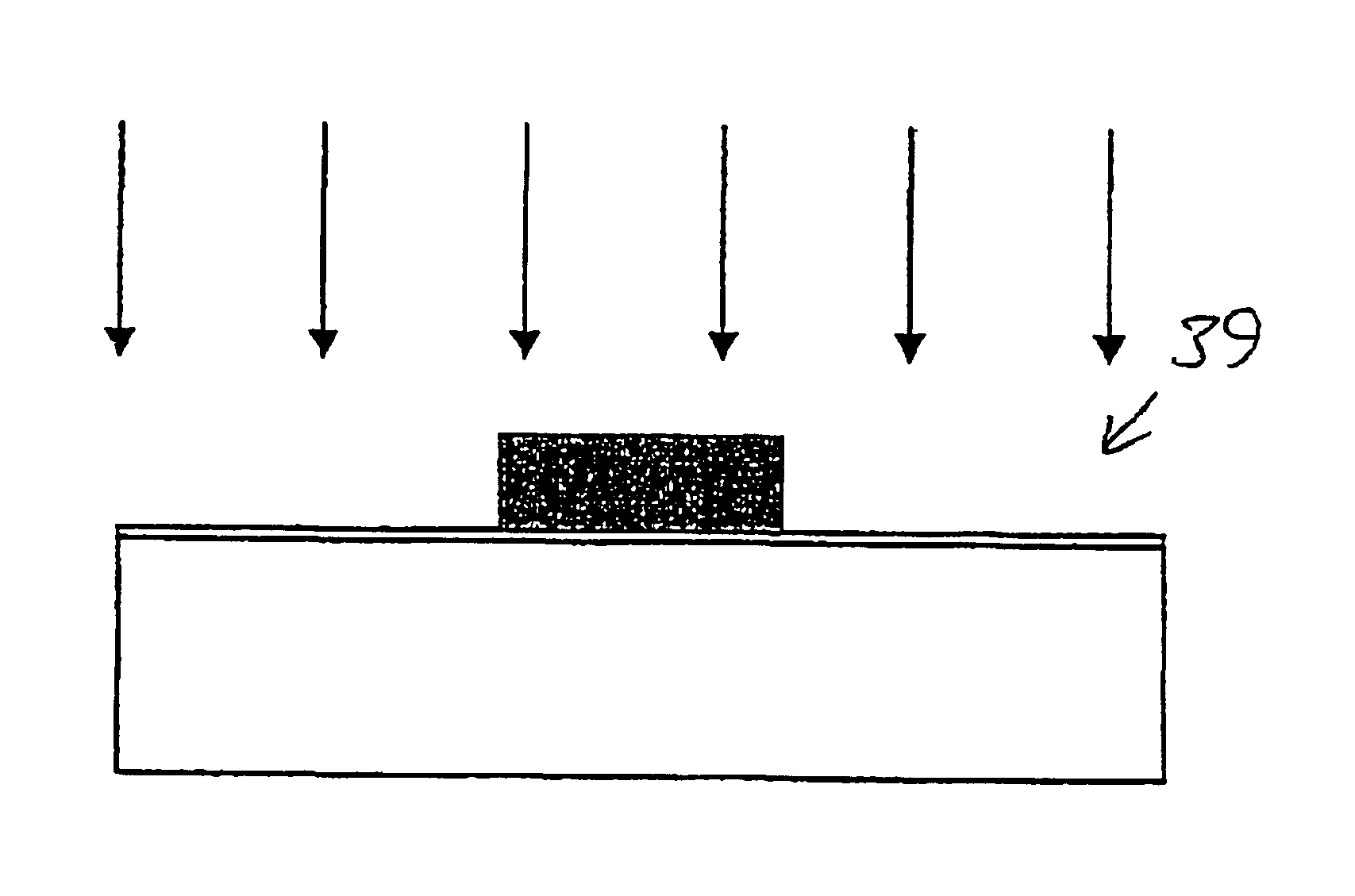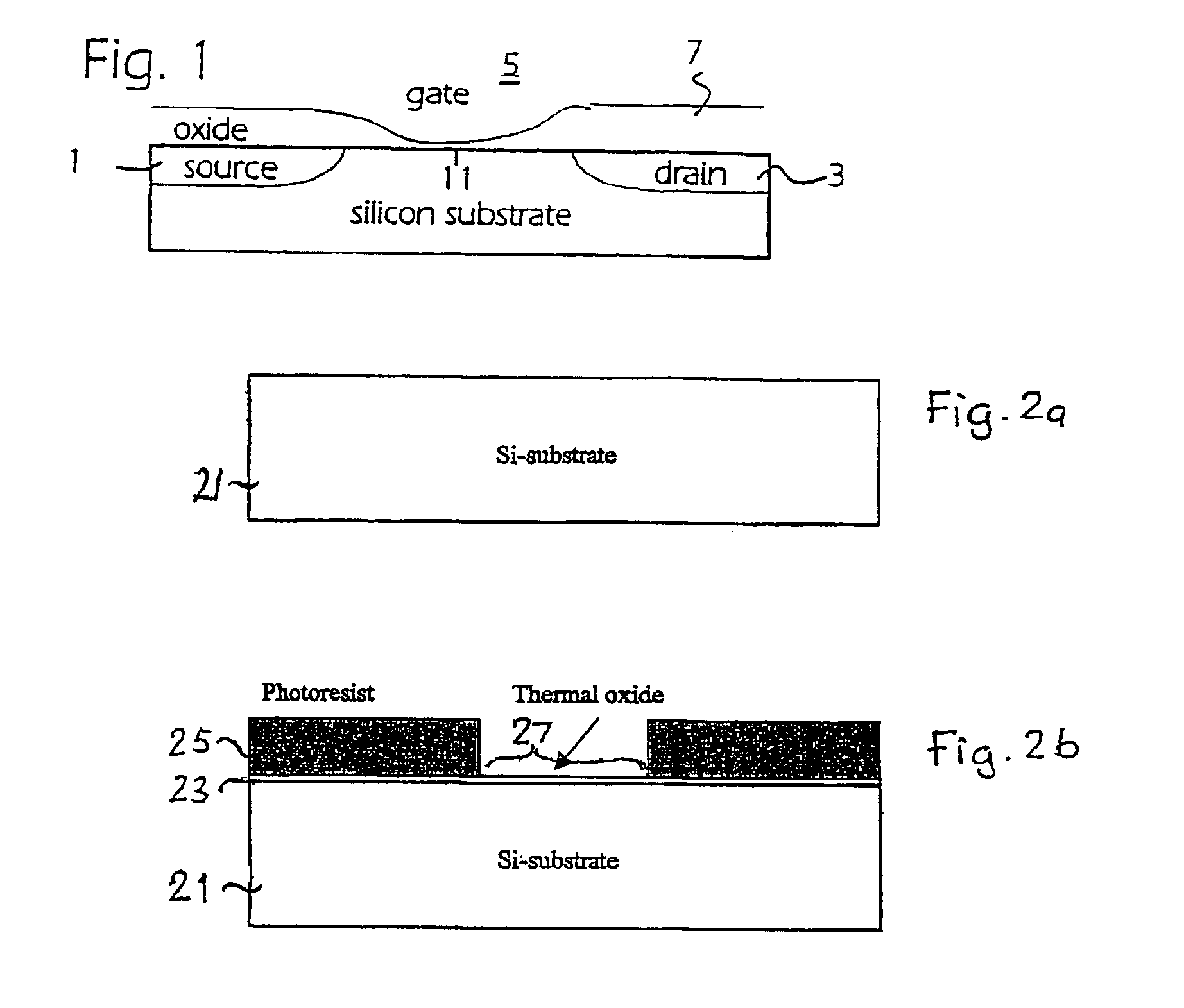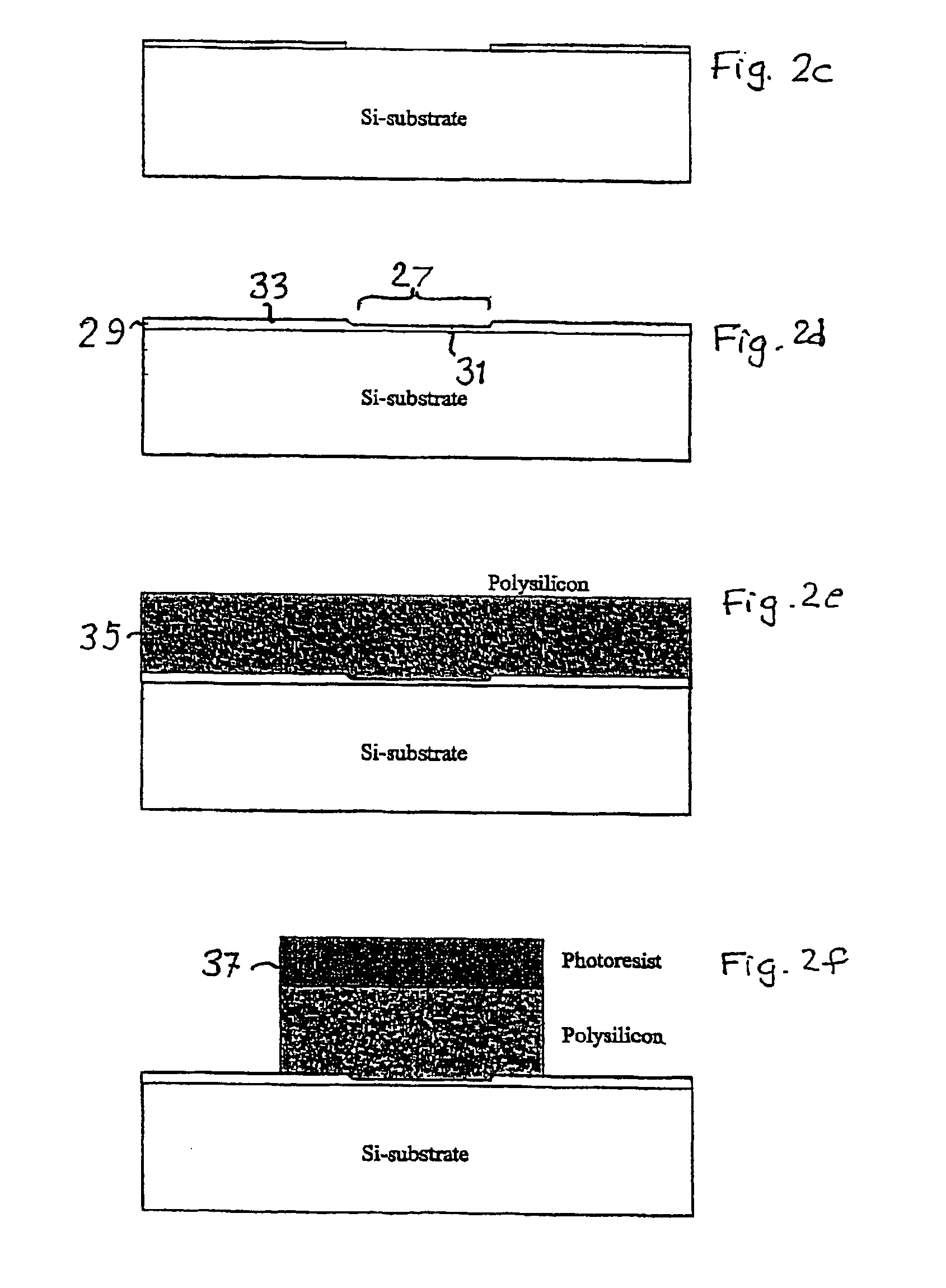Manufacturing of a low-noise mos device
a transistor and low-noise technology, applied in the direction of semiconductor devices, basic electric elements, electrical appliances, etc., can solve the problems of not addressing the problem of hot-carrier noise and the most common bias situations, and it is practically difficult to achieve a true gradual non-uniform oxide level. , to achieve the effect of low total nois
- Summary
- Abstract
- Description
- Claims
- Application Information
AI Technical Summary
Benefits of technology
Problems solved by technology
Method used
Image
Examples
example 1
[0048]Fabrication of an MOS transistor using etching to produce two different gate oxide thicknesses will now be described with reference to the schematic cross-sectional views of FIGS. 2a-2g, the production of the dual gate oxide thicknesses being made substantially in the same way as described in the cited U.S. Pat. No. 5,422,505. The device can typically be a 0.5 μm MOS transistor having a gate oxide thickness of 80 and 120 Å The limit will be set by the photolithography in the step illustrated in FIG. 2b, mainly the dimension of the mask relative to the gate length, i.e. to the mask pattern shown in FIG. 2f. The process sequence utilizes no new process steps; all are available in a conventional CMOS process flow. The steps illustrated in FIGS. 2b and 2c have been added to obtain the MOS transistor, these steps including in total the applying of one additional photo mask, one lithographic step, one dry etching step and one gate oxidation step.
[0049]In FIG. 2a the starting materia...
example 2
[0058]In a second example, the oxidation rate when producing the thermal gate oxide is enhanced or alternatively retarded by implanting species into the silicon before the final thermal oxidation. Thus for instance, ions, chosen from a group including chloride and bromine ions, are injected to selected areas at the surface of a silicon substrate to increase the oxidation rate of substrate in the implanted areas.
[0059]The steps of the process illustrated by FIGS. 2a-2g, when fabricating a device having two different gate oxide thicknesses using substantially the same parameters as in Example 1, are in this example changed by removing the step of etching a first oxide layer, performed after the step illustrated in FIG. 2b, and instead performing an implanting step illustrated by the schematic cross-sectional view of FIG. 3. In this step a region, which in the figure is an area 39 complementary to the area 27 of e.g. FIG. 2b and which is not covered by the photoresist 25, is implanted ...
PUM
 Login to View More
Login to View More Abstract
Description
Claims
Application Information
 Login to View More
Login to View More - R&D
- Intellectual Property
- Life Sciences
- Materials
- Tech Scout
- Unparalleled Data Quality
- Higher Quality Content
- 60% Fewer Hallucinations
Browse by: Latest US Patents, China's latest patents, Technical Efficacy Thesaurus, Application Domain, Technology Topic, Popular Technical Reports.
© 2025 PatSnap. All rights reserved.Legal|Privacy policy|Modern Slavery Act Transparency Statement|Sitemap|About US| Contact US: help@patsnap.com



